#Franz Löwy
Text
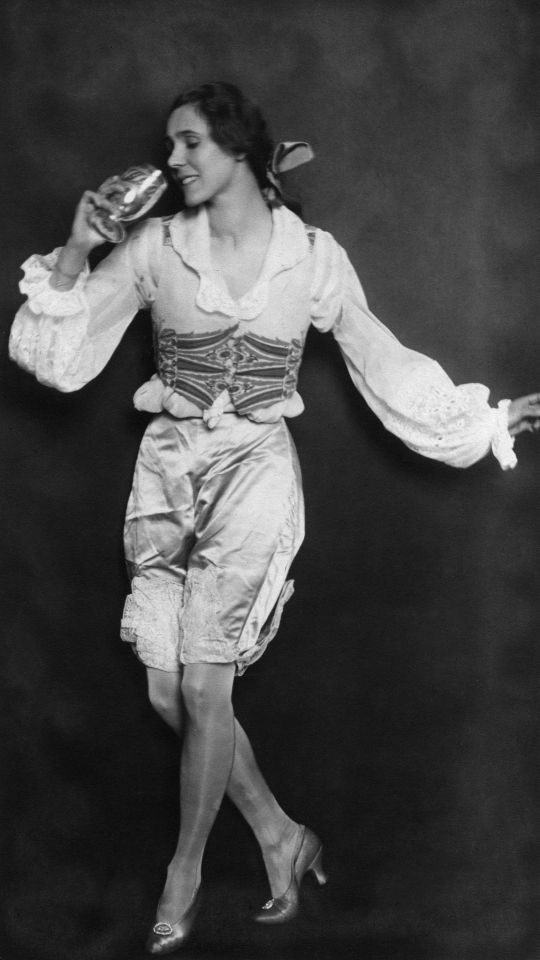
Franz Löwy ~ Grete Wiesenthal (1885-1970), full-figure portrait, dancing with a glass in hand, 1918. Die Dame 16/1918 | getty images
view more on wordPress
#Grete Wiesenthal#franz loewy#Franz Löwy#danseuse#die dame#role portrait#Tänzerin#danzatrice#bailarina#die dame magazine#Franz Lowy#glas#dancer#Molière#Moliere#Rollenporträt#Rollenfoto#1910s#The Bourgeois Gentleman
121 notes
·
View notes
Text

Photos of Fantastic Headgear by Franz Löwy in the November 1928 Moderne Welt.
(source: Österreichische Nationalbibliothek)
3 notes
·
View notes
Photo
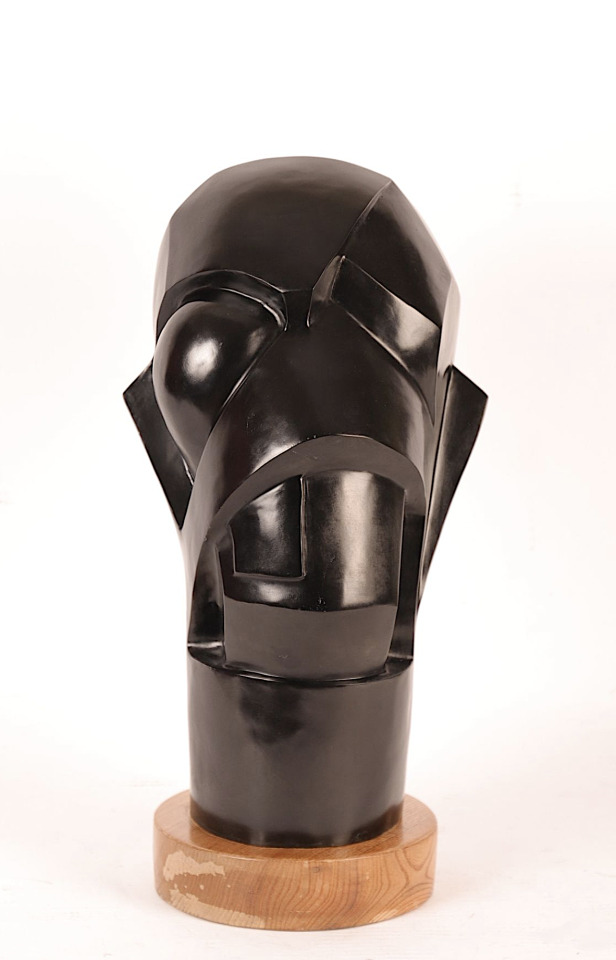
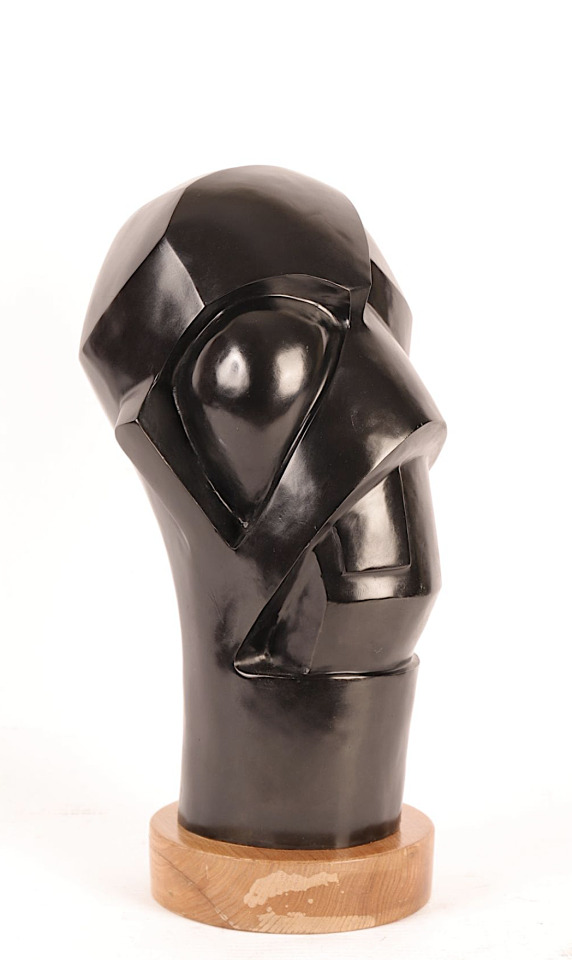
August ZAMOYSKI (1893-1970) - Portrait formiste de Franz Löwy
Exécuté vers 1950 d’après le modèle en plâtre réalisé en 1922, aujourd’hui perdu
22 notes
·
View notes
Text
"kafka" (2024) - the series compared
more about this kafka-biopic in linked post.

joel basman as franz kafka
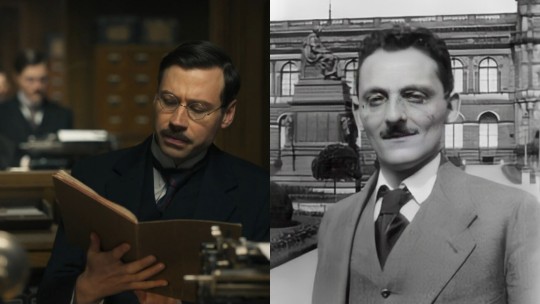
david kross as max brod
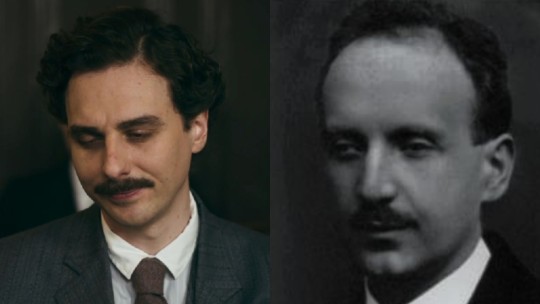
tobias bamborschke as oskar baum
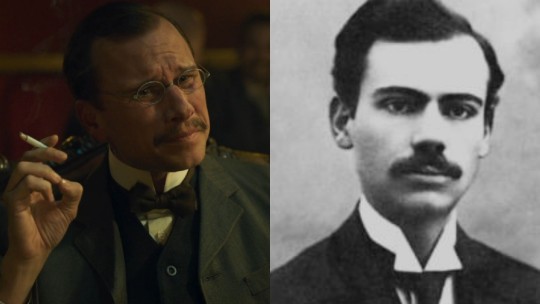
robert stadtlober as felix weltsch

nicholas ofczarek as hermann kafka, franz kafka's father
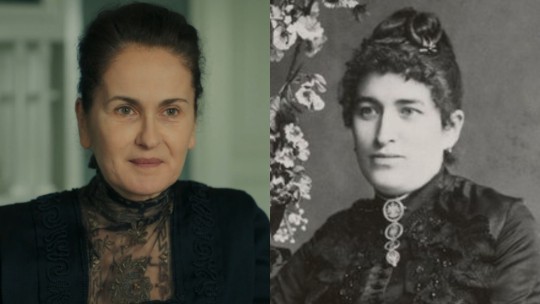
marie-lou sellem as julie kafka, franz kafka's mother
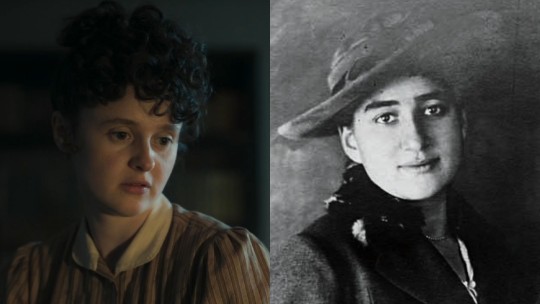
maresi riegner as ottilie "ottla" kafka
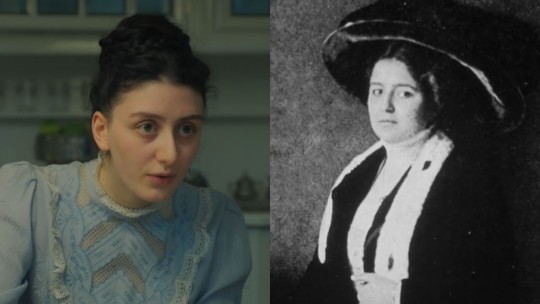
mariam avaliani as gabriele "elli" kafka
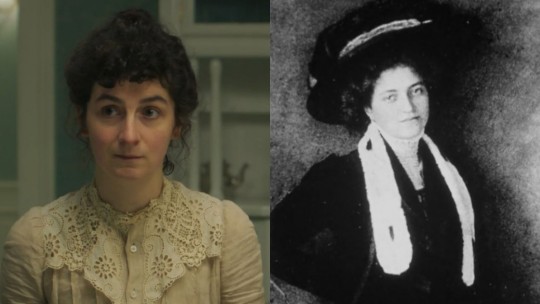
naemi latzer as valerie "valli" kafka
#franz kafka#kafka#1920s#kafka series#kafka serie#kafka 2024#kafka movie#kafka biopic#felice bauer#milena jesenská#dora dymant#dora diamant#franz werfel#jizchak löwy#jizchak levy#rainer maria rilke#grete bloch#max brod#oskar baum#felix weltsch#joel basman#ard#hermann kafka#julie kafka#elli kafka#valli kafka#ottla kafka
22 notes
·
View notes
Text

Cabinet card from a series on national costumes of Austria-Hungary. This one depicts a Transylvanian Saxon woman from Bistritz (now Bistrița, Romania).
Josef Löwy and Franz Gaul, Vienna, ca. 1881–1890
Volkskundemuseum Wien
#austria hungary#romania#siebenbürgen#siebenbürger sachsen#transylvanian saxons#ardeal#erdély#transilvania#transylvania#1881#josef löwy#franz gaul
20 notes
·
View notes
Text


— Franz Kafka comparing himself to his uncle Rudolf Löwy
63 notes
·
View notes
Text
This example, of course, represents virtually the outer line, but even for those who continued to think of themselves as Jewish, German culture was the only valid culture. All that remained from Judaism were some ritualistic hangovers (such as a trip to the synagogue on Yom Kippur) and biblical monotheism. The exemplars of wisdom were no longer Moses or Solomon, but rather Lessing and Goethe, Schiller and Kant. Schiller in particular was truly venerated: his Complete Works were required in the library of every self-respecting German or Austrian Jew (when my parents left Vienna in 1935, they took their copy with them). In Germany, the most resolute assimilationist current was the Central-Verein deutscher Staatsbürger jüdischen Glaubens [Central Association of German Citizens of Jewish Denomination]. Describing this social milieu (to which his own family belonged), Gershom Scholem noted:
"Education and readings were oriented exclusively to Germany, and in the majority of cases, any dissidence, notably in the direction of a return to Judaism, was met with decided opposition. Assimilation ran very deep. Each time, they emphasized over and over, albeit with slight differences, that we belonged to the German nation, at the center of which we formed a religious group, like the others. What was even more paradoxical was that in the majority of the cases, the religious element – which was the only difference – did not exist nor did it exert any influence over how they conducted their lives."
None the less, it would be wrong to regard this thirst for cultural integration as mere opportunism: it could also express sincere and authentic convictions. Even as profoundly religious a Jew as Franz Rosenzweig wrote in 1923, shortly after the publication of his great theological work, Der Stern der Erlösung (The Star of Redemption):
"I believe that my return to Judaism (Verjüdung) made me a better and not a worse German… And I believe that Der Stern will one day be duly recognized and appreciated as a gift that the German mind owes to its Jewish enclave."
Assimilation was successful to a certain degree, but it came up against an insurmountable social barrier. According to Moritz Goldstein’s famous lament of unfulfilled love, which he wrote in 1912 (‘Deutsch-Jüdischer Parnass’), "in vain we think of ourselves as Germans; others think of us as completely un-German [undeutsch]… But were we not raised on German legends? Does not the Germanic forest live within us, can we too not see its elves and its gnomes?"
Assimilation also came up against de facto exclusion from a series of areas: State administration, the armed forces, the magistrature, education – and after 1890 in particular, against growing anti-Semitism, which had its ideologues, activists and press. For all of these reasons, the Jewish communities in Central Europe did not truly integrate into the surrounding society.
–Michael Löwy, Redemption and Utopia: Jewish Libertarian Thought in Central Europe
58 notes
·
View notes
Text

Polobjekte
Das ist das Modell von Joseph Löwys photographischer Drehscheibe, dem um 360 Grad drehbaren Freiluftatelier, das er 1888 im Garten des Belvedere in Wien aufbaute, um die Habsburger Sammlung von Gemälden systematisch zu fotografieren, technisch zu reproduzieren, bevor die Sammlung ins Kunsthistorische Museum an der Ringstraße umzog. Joseph Löwy war k.u.k. Hofphotograph, also ein Höfling oder Cortigiano unter Franz Joseph II., dem Kaiser mit dem Tropfen an der Nase.
Es kann unterschiedliche Gründe geben, warum Polarität gehändelt werden soll. Nicht alle haben damit zu tun, dass das größte Polobjekt auf Erden, nämlich die Erde selbst, sich dreht. Aber viele haben damit zu tun, weil sich darüber Fragen der Zeitmessung und Zeitverwaltung ergeben. Zeitmessung und Zeitverwaltung folgen auch nicht aus einem Selbstzweck heraus, sondern weil sich damit auch das Licht, die meteorologischen Lagen und Energien ändern, es kälter oder wärmer, trockener oder feuchter wird, und damit wieder der Zustand des Bodens, der See, der Tiere und der Menschen sich verändert. Und die Bilder ändern sich mit.
1888 gebaut, das ist ein Jahr, bevor Siemirazki in St. Petersburg auf der großen Schau der Akademie der Künste erstmalig ein Gemälde, seine große und feierliche Phryne, ausschließlich in künstlichem, importiertem Licht zeigt, sind die Gemälde der Habsburger noch sonnen- und mondabhängig, noch abhängig von meteorologisch Vielem, etwa den Wolken, und das auf eine sehr sensible Weise. So sensibel, dass man des Freiluftatelier ganz fein und stufenlos auf den Stand des Lichts einstellen kann, bis es passt und solange es passt, solange das Foto passiert und die technische Reproduktion der Malerei durchgeht. Noch ein bisschen vor, jetzt wieder ein klitzekleines bisschen zurück, so passt es, halt, nein, jetzt wieder vor und so weiter und so fort. Dass es 360 Grad sein sollen, ist vielleicht eher dem seit babylonischen Zeiten existierenden Wunsch nach diskret-exaktem Ausdruck geschuldet als dem Wunsch nach einer vollständigen und bis ins kleinste Detail verfolgten, dauerhaft feststellbaren Wahrheit (denn aus der babylonischen Astrologie kommt die Einteilung in 360 Einheiten). Die studio- und bürokratische Einrichtung (die Bilder werden auch für das Archiv fotograiert) ist durchgehend drehbar, das ist ein Polobjekt.
4 notes
·
View notes
Text

El 7 de octubre de 1943, Ottla Kafka, querida hermana del autor Franz Kafka, fue gaseada a su llegada a Auschwitz después de ofrecerse como voluntaria para escoltar a un grupo de huérfanos del gueto de Terezin para que no tuvieran miedo
Ottilie “Ottla” Kafka, luego Ottilie Davidová (Praga, 29 de octubre de 1892; Auschwitz-Birkenau, 7 de octubre de 1943), era la hermana menor y favorita de Franz Kafka. Fue la más cercana a él entre sus familiares y lo apoyó en tiempos difíciles.
Ottilie, llamada Ottla por su familia, nació en Praga, entonces parte del Imperio austrohúngaro, en el seno de una familia judía asquenazí de clase media. Su padre era el empresario Hermann Kafka (1852-1931), su madre, Julie (1856-1934), era hija de Jakob Löwy, un cervecero de Poděbrady. Tenía tres hermanos, Franz, Gabriele ("Ellie") (1889-1942) y Valerie ("Valli") (1890-1942). Era la hermana favorita de Franz. Bajo su influencia, ella se interesó por el movimiento sionista y se unió al "Klub jüdischer Frauen und Mädchen" ("Club de mujeres y niñas judías"). Después de asistir a la escuela alemana para niñas en el Fleischergasse, probablemente se trasladó a un instituto de formación privado, como sus dos hermanas mayores. Después de completar su educación escolar, fue la única hermana que trabajó en el negocio de sus padres. Luego de su educación escolar, entre otros lugares en una escuela agrícola que Franz Kafka había contribuido decisivamente a iniciar, vivió y trabajó en Zürau (hoy Siřem, municipio de Blšany), en Bohemia occidental, en una finca agrícola propiedad de su cuñado Karl Hermann. 1 Franz Kafka que ya padecía tuberculosis pulmonar, vivió con ella allí desde septiembre de 1917 hasta abril de 1918, y escribió Los aforismos de Zürau.
En julio de 1920, contra los deseos de su padre, Ottla se casó con el católico checo Josef David, colega de Franz Kafka en la compañía de seguros de accidentes de trabajo. David era abogado y asumió la dirección de la Asociación de Compañías Checas de Seguros Privados. En 1921 nació Věra, que luego habría de trabajar como profesora de deportes, editora y traductora, y en 1923 nació Helena, que luego fue médica. Franz Kafka siguió su desarrollo hasta su muerte en junio de 1924
El matrimonio de Ottla Kafka no fue feliz. Según la descripción de su hija Věra Saudková, a su padre le hubiera gustado llevar una vida de clase media, mientras que su madre quería una casa en la que las personas socialmente desfavorecidas pudieran siempre tener un plato de sopa. Como Ottla estaba casada con un no judío, estuvo protegida temporalmente, a diferencia de sus dos hermanas, que inicialmente fueron deportadas al gueto de Litzmannstadt en Lodz en octubre de 1941.
La carga de ayudar a sus hermanas, amigas y familiares cercanos a hacer las maletas, quedarse con ellas la noche anterior a que se las llevaran y acompañarlas hasta el punto de recogida para luego regresar a su propia casa, donde todo parecía transcurrir con normalidad, se volvió insoportable para ella.. La situación de su marido tampoco fue fácil. Dado que, según la ideología racial nazi, se le consideraba de “parentesco judío”, debía contar con que perdería su trabajo. También lo amenazaron con internarlo en el “campo para maridos arios de mujeres judías” en Bystřice (Benešov).
En febrero de 1940, Josef David solicitó el divorcio y en agosto de 1942, se divorciaron. Las hijas no se enteraron del divorcio, lo que hoy hace suponer que pudo haber sido amistoso. Con la ejecución del acta de divorcio, Ottla perdió su protección contra la persecución de los judíos.
Como muchos otros judíos de Praga, Ottla fue deportada al campo de concentración de Theresienstadt, donde trabajó como asistente social en un orfanato. Ella ya se había separado de su familia para no poner en peligro a sus hijas. Los „Mischlingskinder“ (“niños mestizos”) también recibían el aviso de deportación tan pronto como cumplian 14 años. Con la ayuda de un gendarme checo, pudo pasar cartas de contrabando a sus hijas. En estas cartas expresó repetidamente su esperanza sobre un próximo intercambio de niños del gueto de Bialystok, a los que se le permitiría acompañar.
Un transporte humanitario de este tipo, escribió, estaba previsto para Suiza o Suecia. Sus hijas, a quienes se les prohibió ingresar a Theresienstadt porque eran “mitad judías”, se mudaron con Karel Projsa, un amigo de la organización juvenil comunista y uno de los primeros admiradores de Kafka, y sobrevivieron a la guerra. El 5 de octubre de 1943, Ottla, junto con otras 52 enfermeras, acompañó como voluntaria a un grupo de 1.200 niños a Auschwitz, 10 donde fue asesinada poco tiempo después.
Las hermanas de Ottla, Elli y Valli, y otros familiares fueron enviados al gueto de Łódź, donde fueron asesinados. Una placa conmemorativa recuerda a las tres hermanas en la tumba familiar en el Nuevo Cementerio Judío de Praga.
Vera Saudkova, la última sobrina de Kafka, falleció el 3 de agosto de 2015 a la edad de 94 años en Praga.
0 notes
Text
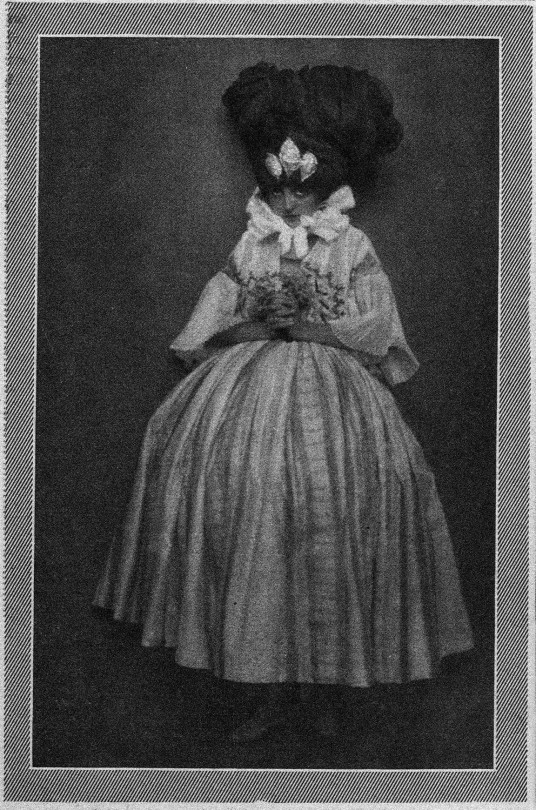
Franz Löwy ~ Maria Ley in Wiener Werkstätte Tanzkostüme. Sport im Bild 47/1921
View & read more on wordPress

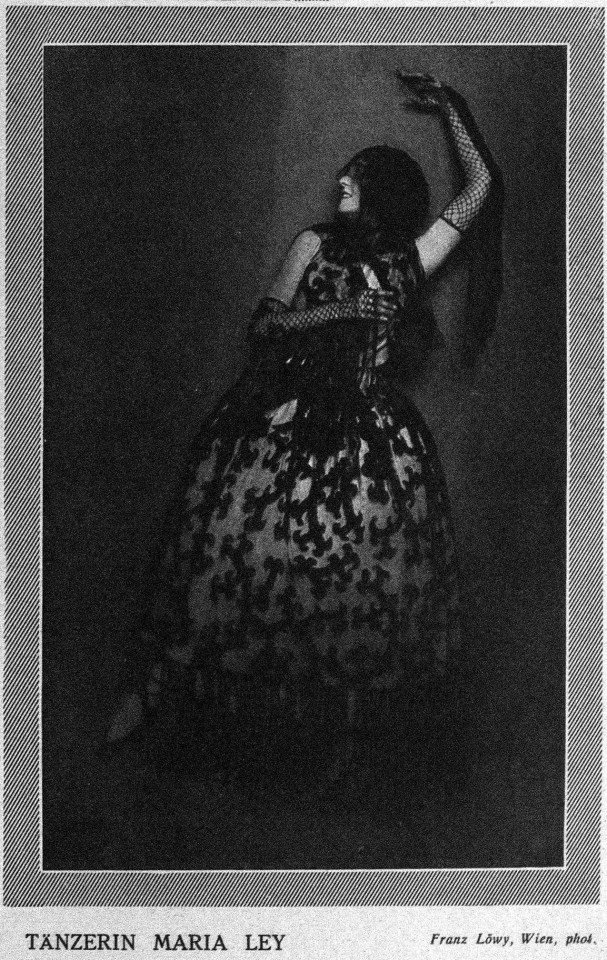
DIE SCHÖNE WIENER TÄNZERIN MARIA LEY die einige Tanzabende in Berlin gab, in ihren neuen, von Professor Wimmer (Wiener Werkstätte) erfundenen Tanzkostümen.…
View & read more on wordPress
#franz loewy#maria ley#Franz Löwy#dance costume#tanzkostum#dance pose#tanzpose#Wiener Werkstaette#Moderne Welt#dancer#Tänzerin#danseuse#danzatrice#bailarina#franz löwy#Franz Lowy#Maria Ley-Piscator#Sport im Bild#tanz#tanzerin#vienna secession#wiener werkstatte#Wiener Werkstätte#women artists
40 notes
·
View notes
Text

Model wearing a crepe de chine dress by Beer, in the April 1928 Moderne Welt. Photo by Franz Löwy.
(source: Österreichische Nationalbibliothek)
#beer#gustav beer#1920s fashion#1920s dress#vintage fashion#vintage dress#franz löwy#fashion photography#moderne welt
13 notes
·
View notes
Text
On this day in Wikipedia: Tuesday, 30th January
Welcome, dobrodošli, karibu, bienvenido 🤗
What does @Wikipedia say about 30th January through the years 🏛️📜🗓️?

30th January 2023 🗓️ : Death - Bobby Beathard
Bobby Beathard, American Pro Football Hall of Fame executive (b. 1937)
"Robert King Beathard Jr. ( BETH-ərd; January 24, 1937 – January 30, 2023) was an American professional football executive who was a general manager for the Washington Redskins and San Diego Chargers of the National Football League (NFL). Over the course of his 38 years in the NFL, his teams competed..."

Image licensed under CC BY-SA 2.0? by Keith Allison from Hanover, MD, USA
30th January 2019 🗓️ : Death - Dick Miller
Dick Miller, American actor (b. 1928)
"Richard Miller (December 25, 1928 – January 30, 2019) was an American character actor who appeared in more than 180 films, including many produced by Roger Corman. He later appeared in the films of directors who began their careers with Corman, including Joe Dante, James Cameron, and Martin..."
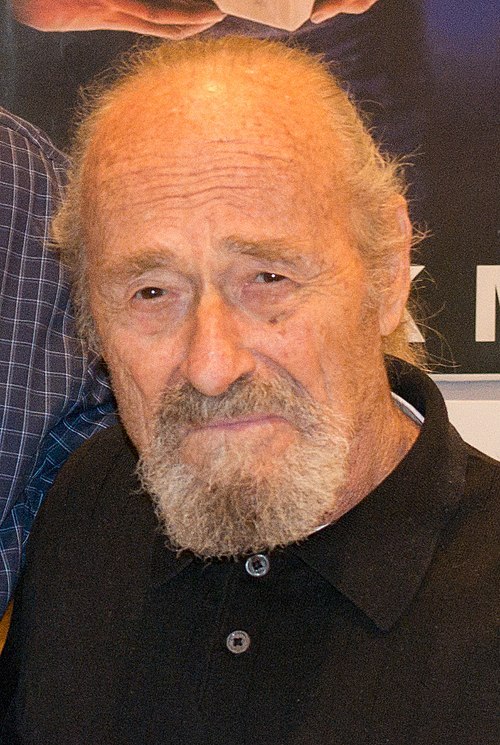
Image licensed under CC BY 2.0? by Rob DiCaterino
30th January 2014 🗓️ : Death - Greater (flamingo)
Greater, oldest known greater flamingo and Feast Festival 2021 mascot (h. c.1919–1933)
"Greater, also known as Flamingo One and Flamingo 1 (died January 30, 2014), was the world's oldest greater flamingo (Phoenicopterus roseus), residing at the Adelaide Zoo in Adelaide, Australia. It was at least 83 years old, having arrived at the zoo from either Cairo or Hamburg (records are unclear)..."
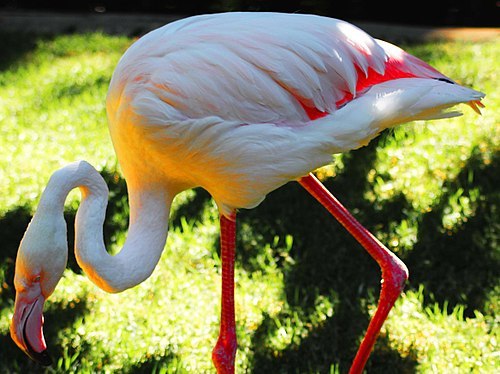
Image licensed under CC BY 2.0? by Les Haines
30th January 1974 🗓️ : Event - Pan Am Flight 806
Pan Am Flight 806 crashes near Pago Pago International Airport in American Samoa, killing 97.
"Pan Am Flight 806 was an international scheduled flight from Auckland, New Zealand, to Los Angeles, California, with intermediate stops at Pago Pago, American Samoa and Honolulu, Hawaii. On January 30, 1974, the Boeing 707 Clipper Radiant crashed on approach to Pago Pago International Airport,..."

Image licensed under GFDL 1.2? by Mike Freer
30th January 1924 🗓️ : Birth - Ernie Calverley
Ernie Calverley, American basketball player and coach (d. 2003)
"Ernest A. Calverley (January 30, 1924 – October 20, 2003) was an American professional basketball player. He was an All-American while playing for the University of Rhode Island. He played professionally with the Providence Steamrollers of the Basketball Association of America for three seasons from..."

Image by Bowman Gum
30th January 1822 🗓️ : Birth - Franz Ritter von Hauer
Franz Ritter von Hauer, Austrian geologist and curator (d. 1899)
"Franz Ritter von Hauer, or Franz von Hauer (30 January 1822 – 20 March 1899) was an Austrian geologist...."

Image by Josef Löwy
30th January 🗓️ : Holiday - Day of Azerbaijani customs (Azerbaijan)
"There are several public holidays in Azerbaijan. Public holidays were regulated in the constitution of the Azerbaijan SSR for the first time on 19 May 1921. They are now regulated by the Constitution of Azerbaijan. ..."

Image by Azim Azimzade (1880-1943)
0 notes
Text
kafka at the yiddish theatre
a scene from the kafka (2024) series, where kafka, along with the rest of the "circle of prague" (max brod, oskar baum, felix weltsch), visit a play by the yiddish theatre.
since i enjoy expressionistic theatre and the yiddish language - this was my favourite scene. also - kafka's joy and laughter was very wholesome. i added english subtitles. 🎻🤎
background / analysis:

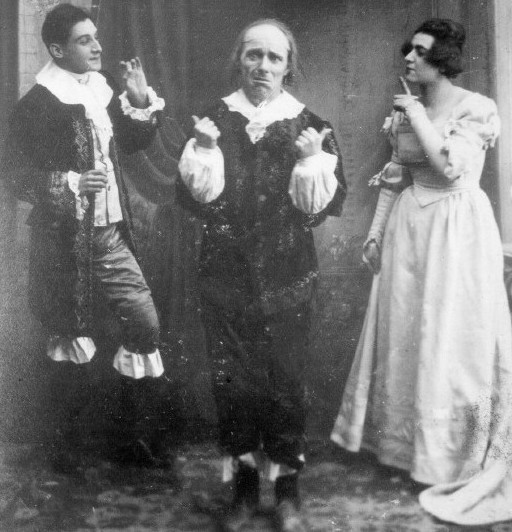

franz kafka enjoyed the yiddish theatre and in 1911/12 he encountered the polish actor yizchak löwy in one of those very plays. a long-lasting friendship began and kafka got more invested in his jewish ancestry - which he and his family had neglected up until that point. later in 1917, kafka published an essay "on the jewish theatre" ("vom jüdischen theater"), which recalls yizchak löwy's memories.
kafka's father hermann kafka viewed people like yizchak as dirty and backward and made fun of his manner of speaking. the hate of bohemian jews towards jews from east-europe wasn't that uncommon - as stupid as it sounds. but hermann also hated yitzchak for being a person of arts, since in his opinion - arts was not valuable, especially in the economical sense.
in the scene, one of the actors portrays an authorial figure, that tries to solve the fight at the dinner-table. the situation, combined with the strange insult of the "fat tomato", reminds kafka of his own father, who often caused arguments when the family ate together. seeing this figure having soup poured over him - makes him laugh, schadenfreude the germans would call it.
#franz kafka#kafka#1920s#movies#history#kafka movie#kafka series#kafka serie#kafka 2024#ard#yiddish#yiddish theatre#yizchak löwy#jizchak löwy
14 notes
·
View notes
Text
YAKASINDA KIZIL KARANFİL TAŞIYAN FRANZ KAFKA’NIN SOSYALİZM İLE İLGİSİ – MİCHAEL LÖWY
http://dlvr.it/SvDzRf
0 notes

